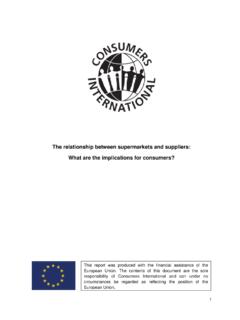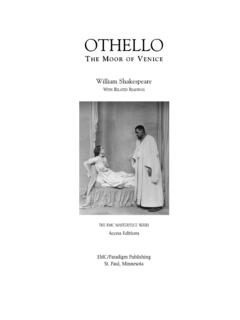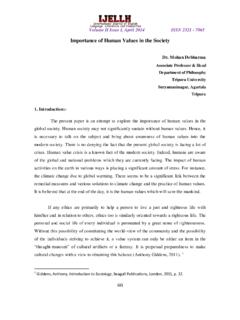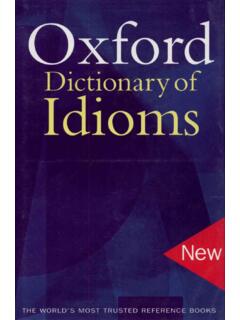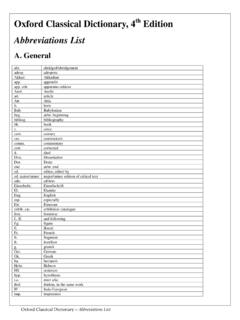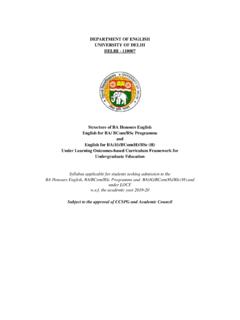Transcription of OSCOLA - University of Oxford
1 OSCOLAO xford University Standard for the Citation of Legal AuthoritiesFourth EditionFaculty of Law, University of ..11 General notes ..31 .1 Citations and footnotes ..31 .1 .1 Citing cases ..31 .1 .2 Citing legislation ..41 .1 .3 Citing secondary sources ..41 .1 .4 Order of sources in footnotes ..41 .2 Subsequent citations, cross-references and Latin gadgets ..51 .2 .1 Subsequent citations ..51 .2 .2 Cross-references ..61 .2 .3 Latin gadgets ..71 .3 Punctuation, ranges of numbers and years, and foreign words ..71 .3 .1 Punctuation ..71 .3 .2 Ranges of numbers and years ..71 .3 .3 Foreign words ..81 .4 Citing foreign materials ..81 .5 Quotations ..81 .6 Tables and lists of abbreviations ..101 .6 .1 Lists of abbreviations ..101 .6 .2 Tables of cases ..101 .6 .3 Tables of legislation and other tables ..111 .7 Bibliographies ..112 Primary Sources ..132 .1 Cases from England and Wales.
2 132 .1 .1 General principles ..13 Case citations including neutral citations ..13 Case citations without neutral citations ..132 .1 .2 Case names ..14 Short forms of case names ..14 Judicial review applications ..15 Attorney General s references ..16 Variations in the name of a case ..162 .1 .3 Neutral citations ..162 .1 .4 Law reports ..17 The best report ..17 Heavily edited reports ..18 Unreported cases ..18 Reports using case numbers in the citation ..182 .1 .5 Courts ..182 .1 .6 Pinpoints ..192 .1 .7 Judges names ..192 .1 .8 Subsequent history of a case ..202 .1 .9 Cases before 1865 ..20 The English Reports ..20 Other older cases ..212 .2 Cases from Scotland ..222 .3 Cases from Northern Ireland ..232 .4 UK primary legislation ..232 .4 .1 Names of statutes ..232 .4 .2 Parts of statutes ..242 .4 .3 Older statutes ..252 .4 .4 Explanatory notes to statutes ..252 .4 .5 Bills ..252.
3 4 .6 Wales ..252 .4 .7 Scotland ..26 Acts ..26 Bills ..262 .4 .8 Northern Ireland ..262 .5 UK secondary legislation ..262 .5 .1 Statutory instruments ..262 .5 .2 Rules of court ..272 .5 .3 Parts of statutory instruments ..272 .5 .4 Wales ..282 .5 .5 Scotland ..282 .5 .6 Northern Ireland ..282 .6 European Union legal sources ..282 .6 .1 EU legislation ..29 Short forms and pinpoints ..29 Older EU legislation ..292 .6 .2 Judgments of the European Court of Justice and General Court ..30 Opinions of Advocates General ..302 .6 .3 Decisions of the European Commission ..312 .7 The European Court of Human Rights ..312 .7 .1 Judgments of the European Court of Human Rights ..312 .7 .2 Decisions and reports of the European Commission on Human Rights ..312 .8 Cases and legislation from other jurisdictions ..322 .8 .1 Cases ..322 .8 .2 Legislation ..323 Secondary sources ..333 .1 General principles.
4 333 .1 .1 Authors names ..333 .1 .2 Titles ..333 .1 .3 Parts, chapters, pages and paragraphs ..333 .1 .4 Electronic sources ..333 .1 .5 Subsequent citations and short forms ..343 .2 Books ..343 .2 .1 Authored books ..343 .2 .2 Edited and translated books ..353 .2 .3 Contributions to edited books ..353 .2 .4 Older works ..353 .2 .5 Books of authority and institutional works ..363 .2 .6 Encyclopedias ..363 .2 .7 Looseleaf services ..363 .3 Articles ..373 .3 .1 Hard copy journals ..373 .3 .2 Case notes ..373 .3 .3 Forthcoming articles ..383 .3 .4 Online journals ..383 .3 .5 Working papers ..383 .4 Other secondary sources ..393 .4 .1 General principles ..393 .4 .2 Hansard and parliamentary reports ..393 .4 .3 Command papers ..403 .4 .4 Law Commission and Scottish Law Commission reports ..413 .4 .5 European Commission documents ..413 .4 .6 Conference papers ..413 .4 .7 Theses ..423 .4 .8 Websites and blogs.
5 423 .4 .9 Newspaper articles ..423 .4 .10 Interviews ..423 .4 .11 Personal communications ..434 Appendix ..444 .1 Guide to neutral citations ..444 .1 .1 United Kingdom ..444 .1 .2 England and Wales ..444 .1 .3 Scotland ..444 .1 .4 Northern Ireland ..444 .1 .5 Tribunals ..454 .2 Abbreviations ..454 .2 .1 Abbreviations of the names of law reports and journals ..45 Law reports ..45 Journals ..464 .2 .2 Abbreviations used in legal historical works ..474 .2 .3 Abbreviations of the titles of books of authority ..474 .2 .4 Abbreviations in case names ..474 .2 .5 Abbreviations of words and phrases in footnotes ..484 .3 Guides for other jurisdictions ..494 .4 Other useful sources ..50 Index ..53 OSCOLA Quick Reference Guide ..back cover 1 IntroductionThere are two golden rules for the citation of legal authorities . One is consistency . The other is consideration for the reader . Legal writing is more persuasive when the author refers to legal materials in a clear, consistent and familiar way.
6 When it is easy to identify and to find the author s sources, it becomes easier for the reader to follow the argument . The Oxford University Standard for Citation of Legal Authorities ( OSCOLA ) is designed to help the author to achieve consistency and to make life easier for the reader . OSCOLA does not purport to be comprehensive, but gives rules and examples for the main UK legal primary sources, and for many types of secondary sources . As far as possible, the guidelines in OSCOLA are based on common practice in UK legal citation, but with a minimum of punctuation . When citing materials not mentioned in OSCOLA , use the general principles in OSCOLA as a guide, and try to maintain consistency . OSCOLA is a guide to legal citation, not a style guide . For advice on punctuation, grammar and writing style, use the most recent editions of Fowler s Modern English Usage, The Oxford English dictionary , and Ha r t s R u l e s.
7 Ha r t s R u l e s is particularly useful for information about typographical conventions, but note that the legal citation section is not always consistent with OSCOLA . OSCOLA was first devised by Peter Birks in 2000, in consultation with law students and faculty at Oxford University , and with Oxford University Press and Hart Publishing . It is used by the Oxford University Commonwealth Law Journal, and the editors of that journal have also played an important role in its development . Subsequent editions of OSCOLA were produced in 2002 (by Professor Birks) and in 2004 (revised 2006, both by Timothy Endicott and Sandra Meredith) . This latest revision of OSCOLA provides more detailed coverage of domestic legal sources, and in particular the treatment of Welsh, Scottish and Northern Irish sources has been considerably expanded .Although originally designed for use within Oxford University , OSCOLA is now used by law schools throughout the UK and overseas, and by a number of legal journals and publishers.
8 In recognition of the wider usage of OSCOLA , an editorial advisory board was established in advance of this revision . We are grateful to the members of the advisory board (Ruth Bird, Naomi Chapman, Peter Clinch, Timothy Endicott, Richard Hart, Barbara Lauriat, John Louth and Tracey Varnava) for their invaluable assistance . Peter Clinch, in particular, was very helpful . Others to whom we are grateful for their advice on aspects of this revision are Paul Brand, Mike Macnair, Gareth Ryan, Adrian Zuckerman, and those users of OSCOLA who wrote 2to us with comments during the revision . Any errors and omissions remain entirely our responsibility . Finally, we would like to thank Hart Publishing for their generous help with the design .We are also grateful to Hart Publishing for agreeing to publish OSCOLA while allowing us to continue to make the online version available free of charge from the OSCOLA website.
9 We hope that users of OSCOLA will find the published version to be a useful resource . Some small changes were made when preparing OSCOLA for publication, and an index was added, but the current online version and the published version are the same .We hope that the revised standard shows the consideration for authors and readers that motivated Professor Birks to devise a uniform standard for the citation of legal authorities .Sandra Meredith and Donal NolanFebruary 2012 OSCOLA is updated every two to three years. Please send feedback to OSCOLA website ( ) provides support materials for Endnote and other bibliographic software, a link to Cardiff University s online tutorial for OSCOLA , and other materials. 31 General Citations and footnotesWhen writing for an academic or professional audience, provide evidence for your claims by citing your sources in footnotes.
10 Legal writing cites primary legal sources (cases, statutes and so on), as well as secondary sources such as books, journal articles, websites and policy statements . OSCOLA is a footnote style: all citations appear in footnotes . OSCOLA does not use endnotes or in-text citations, such as (Brown, 2007) . Longer works, such as books and theses, also include citations in tables of cases and legislation, and bibliographies .When citing any source, either directly (as a quotation) or indirectly (by paraphrasing or referring to ideas in a source), cite the reference in a footnote, in the style indicated in OSCOLA .Indicate footnotes with a superscript number which should appear after the relevant punctuation in the text (if any) . Put the footnote marker at the end of a sentence, unless for the sake of clarity it is necessary to put it directly after the word or phrase to which it relates.
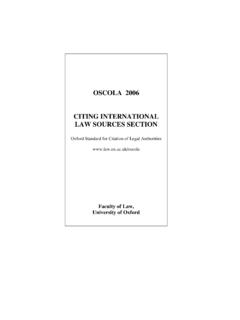
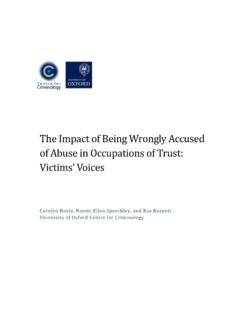

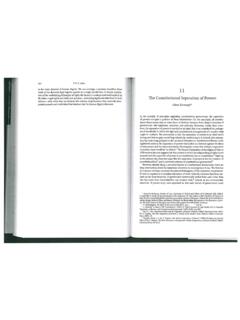
![[103R] THE 2019-2020 PRICE MEDIA LAW MOOT COURT ...](/cache/preview/0/4/6/0/a/d/7/4/thumb-0460ad74e87ef78c08fd83d0d32ab016.jpg)
![[103A] THE 2019-2020 PRICE MEDIA LAW MOOT COURT ...](/cache/preview/e/0/9/1/0/f/9/6/thumb-e0910f964b396d31bc82ce1e5ba8e0e8.jpg)


